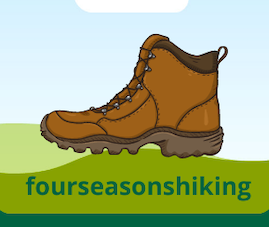When I set out to explore the great outdoors or dash through a downpour in the city, I count on my rain gear to keep me dry. It’s crucial to understand that staying comfortable isn’t just about repelling water; it’s about balance. That’s right, a balance between waterproof protection and breathability is key for ultimate comfort and utility.
Let’s start with the basics. Waterproof fabrics are designed to block water from penetrating, while breathable fabrics allow your body’s moisture (sweat) to escape. When one of these functions overpowers the other, the results can range from feeling clammy to getting drenched.
The real-life implications of ignoring this balance are far from trivial. Picture hiking up a hill in a heavy rain jacket that’s as airtight as a plastic bag. You’re protected from the rain, sure, but now you’re soaked in sweat. Alternatively, imagine a fabric so focused on breathability that it fails at the first sign of a serious downpour. Either scenario undermines your activity and, honestly, your mood.
The psychological factor plays a role, too. Knowing that I’m geared up in apparel that’s both water-resistant and breathable makes me more confident to face unpredictable weather—be it a sudden shower or a relentless drizzle that accompanies me on a hike. Learn more.
Now that you sense the need for harmonized rain gear, you may wonder how this balance is achieved. In the next section, I share insights into the material innovations and technologies that make it possible to step out with assurance, knowing you’re protected from the elements while maintaining comfort through breathability.
The Technology Behind Waterproof Breathability

If you’ve ever been caught in the rain during an outdoor adventure, you know the struggle.
You need protection from the pouring rain, but at the same time, you don’t want to feel like you’re marinating in your sweat. The technology that tackles this issue is quite fascinating. It’s a marriage of membrane innovation and fabrication techniques that keep water out while letting moisture escape.
Let’s start with materials. The two big names in this technology are membranes and durable water-repellent (DWR) coatings. Membranes, like Gore-Tex or eVent, are layers within the fabric that block water from entering while allowing internal moisture (sweat) to evaporate. DWR is a surface coating that repels water, causing it to bead up and roll off the fabric. Together, they are the primary safeguards between you and the elements.
However, material technology is just one slice of the pie. Design plays a crucial role too. Features such as strategically placed zippers and vents allow you to regulate temperature and moisture. The art of layering clothing also boosts functionality. Picture a system where each piece compliments another to optimize breathability and waterproofing.
Understanding waterproofing standards and breathability ratings is like decoding a puzzle that ultimately ensures your comfort. These ratings tell you the amount of water pressure a material can withstand and the volume of vapor it allows to pass through. In other words, they define the specific limits of your gear’s performance in wet conditions.
When comparing materials like coated nylons, polyurethanes, and PTFE membranes, consider your needs. Nylon might suit urban commutes, while PTFE membranes could be ideal for rigorous mountain hikes. Each offers a distinct level of protection and breathability tailored for different scenarios.
Remember, the balance of breathability and waterproofing is paramount. Too much focus on either side can lead to an uncomfortable experience, either through wetness or poor ventilation. After all, the goal is to enjoy the great outdoors, not endure it.
Finding the Middle Ground: Breathable Waterproof Gear in Action
Maintenance matters too. Follow the care instructions on your gear. Regular cleaning and reapplying DWR treatments will keep water beading off and allow the material to breathe.
When you’ve got the right theory and understand the science, it’s about putting it all into practice. Choosing rain gear doesn’t just hinge on how waterproof it is. It’s also about how well it breathes to let your sweat and the humidity out. You need gear that keeps rain out and lets your body breathe to stay comfortable.
Outdoor enthusiasts know that tents are your home away from home. A breathable tent means less condensation inside, making for a more comfortable refuge. Features like vent flaps that can be opened or closed can offer much-needed airflow without letting water in.
Here’s my shortcut for picking out gear: look for a waterproof rating above 10,000 mm and a breathability rating of at least 10,000 g/m². These numbers aren’t the be-all and end-all, but they’re a solid starting point for high-quality, reliable performance.
In the end, remember it’s about balance. Too much focus on waterproofing leads to a clammy and uncomfortable experience, while overlooking water resistance can get you soaked. Find that sweet middle ground. Good gear is an investment in your comfort, safety, and enjoyment of the outdoors.
Ask experienced hikers, backpackers, and outdoor pros—their insights are gold. Match your gear to the kind of weather and the intensity of your activity. A thunderstorm in the mountains demands different protection than a drizzle on a countryside walk.
fourseasonshiking..com is a participant in the Amazon Services LLC Associates Program, an affiliate advertising program designed to provide a means for sites to earn advertising fees by advertising and linking to Amazon properties including, but not limited to, amazon.com. Amazon offers a small commission on products sold through their affiliate links.


Thank you for sharing this article, Lonnie. Your detailed explanation of balancing waterproof protection and breathability in rain gear is very informative. I appreciate how you emphasize the importance of this balance for both comfort and functionality, especially in outdoor activities.
Your breakdown of the technology behind waterproof breathability is enlightening. The way you describe the role of membranes and durable water-repellent coatings, along with the importance of design features like zippers and vents, provides a comprehensive understanding of how these technologies work together to keep us dry and comfortable.
Overall, your article does a fantastic job of highlighting the critical aspects of choosing the right rain gear and maintaining it for optimal performance. Thank you for sharing your expertise!
Thank you Don for your comment and enthusiasm for safety outdoors.
Sincerely,Lonnie
I’ve definitely experienced the psychological comfort of knowing my gear can handle whatever weather comes my way. It’s empowering to step out with confidence, equipped with apparel designed to manage both rain and internal moisture. This balance not only enhances the enjoyment of outdoor activities but also keeps me going without discomfort or distractions. Can’t wait to delve into the next section about the innovations making this possible—always looking to upgrade my gear! thank you so much!
Thank you for your comment! I am glad you found what you needed.
Sincerely, Lonnie
Great article, also finding a balance between rain gear and breathability is crucial for outdoor activities. Effective rain gear should keep you dry without causing you to overheat or feel clammy. Breathable materials like Gore-Tex or eVent provide this balance, allowing sweat to escape while blocking rain. Investing in well-designed, breathable rain gear enhances comfort and performance, making it a worthwhile choice for anyone who spends time in wet conditions. Thanks
Yes, Waterproof, Breathable Raingear is essential for anyone spending time in the great outdoors!
Thank you for your comment!
Lonnie